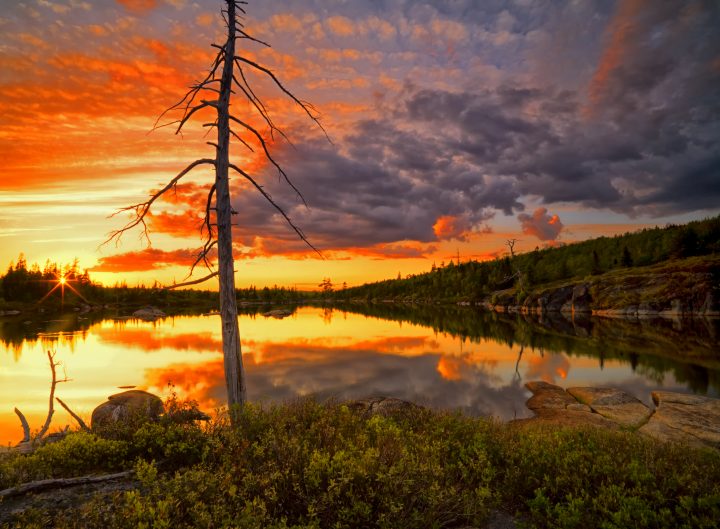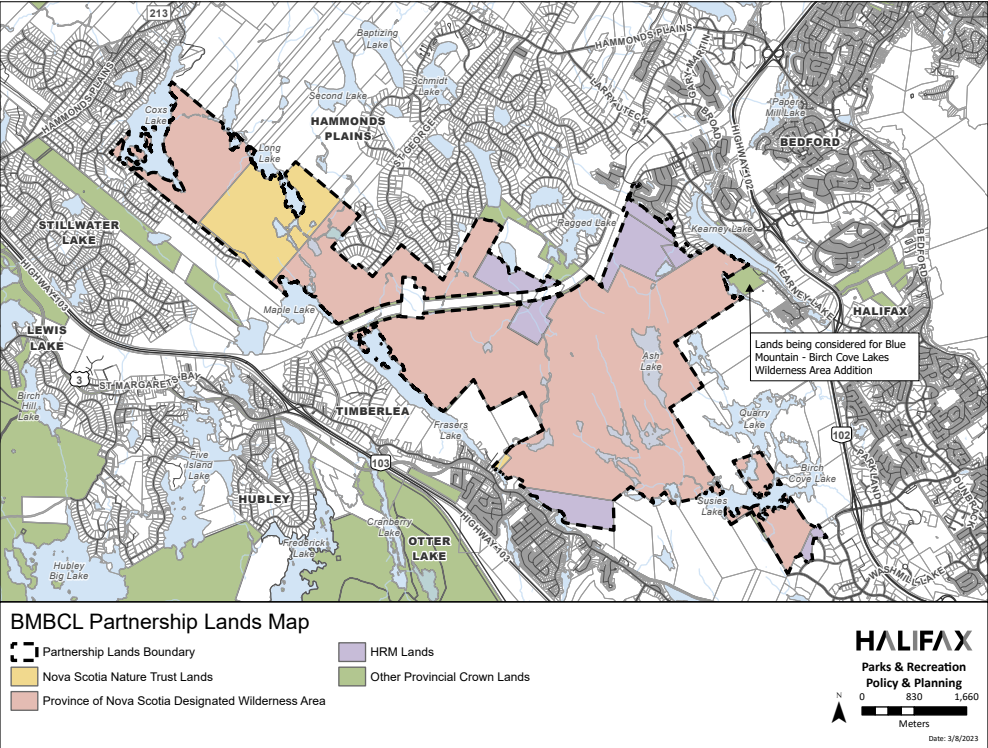A new urban park in the growing stages in the Halifax region is drawing comparisons to some of the best North America has to offer.

Mary Ann McGrath, chair of Friends of the Blue Mountain-Birch Cove Lakes, a group dedicated to ensuring the formation of the park, said that the 2,304-hectare area has one unique advantage that parks like New York City’s Central Park do not.
“For the most part, I can still hear traffic when I’m in there (Central Park), I don’t hear any traffic when I’m in this place. It’s quiet,” she said of the park located on the outskirts of Halifax.
“And to be able to go to some place quiet so easily from a busy urban centre, if we can keep that, I think we have given people an amazing gift.”
McGrath, who’s been involved with the project for about 25 years, said she finds herself comparing the project’s current planning phase to similar periods during the development of Central Park and Vancouver’s iconic Stanley Park.
Her comments followed an announcement Tuesday of $ 2.1 million in new funding from Parks Canada, moving the Blue Mountain-Birch Cove Lakes area one step closer to becoming Canada’s second national urban park.
A release from Parks Canada said that after a pre-feasibility report, the site has met the initial requirements of the national urban park process and is now ready to enter the planning phase.
“The planning stage represents an important opportunity to further refine and plan key park components, including governance models and park boundaries as well as detailed planning for trails, public access, and infrastructure needs,” a release said.
The planning phase is led by Parks Canada in collaboration with the Halifax Regional Municipality, the province’s Department of Environment and Climate Change, Nova Scotia Nature Trust, the Mi’kmaq of Nova Scotia, and groups like the Friends of Blue Mountain-Birch Cove Lakes.

McGrath said after this “extremely positive” announcement, she doesn’t see how the project can fail.

Get breaking National news
“It’s a legacy project that we can’t even measure at this point,” she said when asked what she thought the park would bring to the city of Halifax.
“It’s five or six-thousand acres of untouched land that’s surrounded by urban development … that’s just a gift that almost nobody gets in a municipal setting,” she said.
“You start at the Hammonds Plains end and it’s a lot of trees, more rolling hills, you get down to the Halifax end, behind Kent and Kearney Lake, and you have rock barrens, you basically have Peggy’s Cove with a few more trees.”
The planning period is expected to take about a year to complete.
According to a graphic included in a report submitted to Halifax Regional Council on Tuesday, the expected results of the planning phase will include a published summary highlighting public engagement, a proposed budget and a signed agreement showcasing Parks Canada’s commitment to moving forward.
The following step would include finalizing the proposal and securing funding in order to proceed with the remaining “implementation” stage, where the necessary development would begin.
When asked what she thinks it’ll take to get to that last phase, McGrath offered five main points.
“A good report on ecology that shows where the access points (to the park) ought to be, acquisition of the necessary land, a good trails plan to lead people safely in, some amenities, and a resolution to Annapolis, a good one,” she said, referring to an ongoing legal dispute between Annapolis Group and the municipality over some of the Birch Cove Lakes area.
In October 2022 after claims were dismissed and overturned, the Supreme Court of Canada said a trial could proceed to determine whether Halifax Regional Municipality improperly used its regulatory powers to effectively seize land from Annapolis Group Inc. for use as a public park without compensation.
“The lawsuit is a big problem and worries us continually because as a park, this land needs those lakes, they are the Birch Cove Lakes of the Blue Mountains-Birch Cove Lakes,” she said.
“They’re the most accessible to the city, they’re the closest … ideally there wouldn’t be any (developments), but somebody’s got to pay an awful lot of money for that to happen.”
McGrath noted that she isn’t saying there can’t be any development, just the development needs to be “extremely carefully considered,” due to the importance of maintaining accessibility to the Birch Cove Lakes via the park.

Another issue is acquiring all the remaining land to map out the park’s route.
“There is land that we know should be acquired … will people sell it? Will HRM agree to the price they want to sell it for? Hard to say,” she said.
She said so far, the municipality has acquired about four “buffer lands” around the edges of the parks to act as potential access points. She said two are adjacent to public streets while the others are in the woods.
According to the release from Parks Canada, the park area is currently home to 23 at-risk species and 61 species of “conservation concern.” It also mentions that the Blue Mountain-Birch Cove Lakes area is already a popular destination for swimming, hiking, camping and cross-country skiing.
In a statement made on Tuesday, Halifax mayor Mike Savage noted the importance of this project entering into its next steps.
“As our municipality continues to grow, it is more important than ever to preserve access to pristine wilderness and protect natural habitats,” he said.
“This welcome federal investment toward a Blue Mountain-Birch Cove Lakes national urban park will help ensure it remains a nature refuge for generations to come.”
If everything goes according to plan, the Blue Mountain-Birch Cove Lakes project would be only the second of its kind in Canada, following Toronto’s Rogue National Urban Park.
– with files from The Canadian Press









Comments